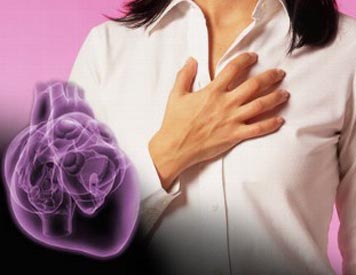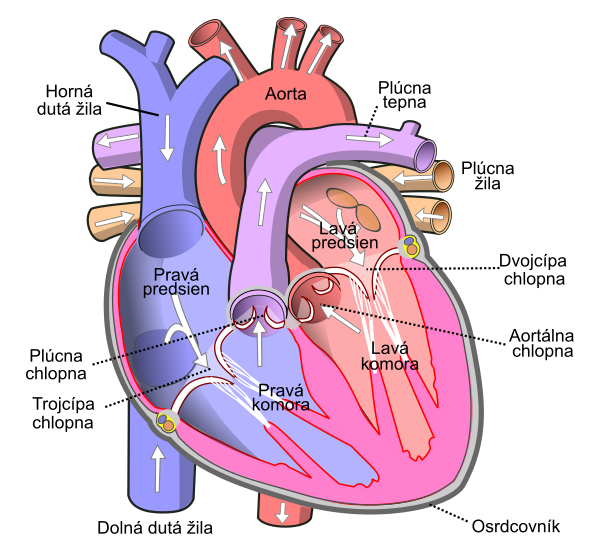Heart disease and heart attacks claim the lives of more American women than men each year, and pose a greater threat to American women than all forms of cancer combined. Unfortunately, many women do not know that the symptoms of a woman having a heart attack can be significantly different from those of a man.
Research by the National Institutes of Health (NIH) indicates that women often experience new or different physical symptoms as long as a month or more before experiencing heart attacks.
Among the 515 women studied, 95-percent said they knew their symptoms were new or different a month or more before experiencing their heart attack, or Acute Myocardial Infarction (AMI). The symptoms most commonly reported were unusual fatigue (70.6-percent), sleep disturbance (47.8-percent), and shortness of breath (42.1-percent).
Many women never had chest pains
Surprisingly, fewer than 30% reported having chest pain or discomfort prior to their heart attacks, and 43% reported have no chest pain during any phase of the attack. Most doctors, however, continue to consider chest pain as the most important heart attack symptom in both women and men.
The NIH study, titled "Women's Early Warning Symptoms of AMI," is one of the first to investigate women's experience with heart attacks, and how this experience differs from men's. Recognition of symptoms that provide an early indication of heart attack, either imminently or in the near future, is critical to forestalling or preventing the disease.
In a NIH press release, Jean McSweeney, PhD, RN, Principal Investigator of the study at the University of Arkansas for Medical Sciences in Little Rock, said, "Symptoms such as indigestion, sleep disturbances, or weakness in the arms, which many of us experience on a daily basis, were recognized by many women in the study as warning signals for AMI. Because there was considerable variability in the frequency and severity of symptoms," she added, "we need to know at what point these symptoms help us predict a cardiac event."
Women's symptoms not as predictable
According to Patricia A.Grady, PhD, RN, Director of the NINR, "Increasingly, it is evident that women's symptoms are not as predictable as men's. This study offers hope that both women and clinicians will realize the wide range of symptoms that can indicate heart attack. It is important not to miss the earliest possible opportunity to prevent or ease AMI, which is the number one cause of death in both women and men."
Women take notice of these 12 Important Heart Tips!Heart disease and heart attacks claim the lives of more American women than men each year, and pose a greater threat to American women than all forms of cancer combined. Unfortunately, many women do not know that the symptoms of a woman having a heart attack can be significantly different from those of a man. C. Noel Bairey Merz, M.D., Chair of the American College of Cardiology's Prevention and Cardiovascular Diseases Committee is offering a dozen important heart tips for women.
Women take notice of these 12 Important Heart Tips!
1. If you're over age 18, have your blood pressure checked annually; over age 45, have your blood cholesterol and blood sugar checked each year; and if you have a family history of heart disease in a relative prior to the age of 60, especially in a female relative, ask your physician to do these tests at earlier ages and to consider additional tests such as treadmill testing and other heart disease screening tests.
2. Be aware that the symptoms for women having a heart attack are often different from those of a man, but any of the following symptoms can occur in men and women:
Classic Symptoms-Squeezing chest pain or pressure
-Shortness of breath
-Sweating
-Tightness in chest
-Pain spreading to shoulders, neck or arm
-Feeling of heartburn or indigestion with or without nausea and vomiting
-Sudden dizziness or brief loss of consciousness
Symptoms More Likely in Women-Indigestion or gas-like pain
-Dizziness, nausea or vomiting
-Unexplained weakness, fatigue
-Discomfort/pain between shoulder blades
-Recurring chest discomfort
-Sense of impending doom
3. Talk to your doctor or gynecologist regularly about your heart health. Be proactive in bringing this topic up for discussion. Ask for a thorough assessment of your heart disease risk factors: family history, cholesterol - especially LDL, HDL and triglycerides - glucose (blood sugar) levels, blood pressure, smoking history, weight, stress and exercise. If you have risk factors, formulate a plan with your doctor to reduce or eliminate or reduce them.
4. If you have one or more risk factors, ask your doctor or gynecologist if you should have an electrocardiogram (ECG) or exercise stress test.
5. Ask your doctor or gynecologist to review risk factors for heart disease and heart attack symptoms during your annual check-up. Discuss these with your family and friends, along with the importance of calling 9-1-1 if these symptoms occur.
6. Tell your doctor or gynecologist about any personal or family history of heart disease.
7. Make sure you understand any medications or special instructions your doctor has given you, including when you need to have follow-up tests.
8. Be aware of your diet and lifestyle. Read labels and avoid foods that are high in saturated fats. Aim to eat 5-9 servings of fruits and vegetables each day. Whenever possible, take the stairs instead of the elevator, and look for other ways to get more exercise.
9. Don't smoke If you do smoke, stop.
10. If you are experiencing symptoms that could be a signal of a heart attack, call 9-1-1 and get to the emergency room quickly to minimize possible damage to your heart.
11. Consider taking aspirin at the first sign of heart attack symptoms.
12. Check out nearby cardiac rehabilitation centers and community programs to help you stop smoking, get regular exercise, lose weight and reduce stress.
If you are experiencing symptoms that could be signaling a heart attack or if you see someone else with these symptoms, call 9-1-1 immediately and summon an ambulance. Do not attempt to drive yourself as only paramedics and trained fire department personnel have the necessary equipment to revive you if your heart has stopped beating. Give the patient one aspirin to chew, and if she or he is not breathing, start CPR. Above all, get to the hospital as quickly as possible because the longer a heart attack goes untreated, the more badly damaged your heart will be.





















